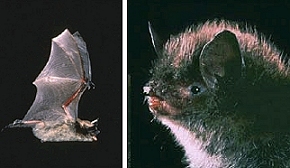Myotis Lucifugus Habitat, Poop Gives The Scoop On Who S Roosting Where Habitat Conservation Trust Foundation
Myotis lucifugus habitat Indeed recently is being hunted by users around us, perhaps one of you personally. Individuals are now accustomed to using the net in gadgets to view video and image data for inspiration, and according to the title of this article I will discuss about Myotis Lucifugus Habitat.
- Little Brown Myotis Northern Myotis And Tri Colored Bat Recovery Strategy Ontario Ca
- Little Brown Bat Bat Facts And Information
- Little Brown Bat Chesapeake Bay Program
- Little Brown Bat Vermont Fish Wildlife Department
- Hinterland Who S Who Little Brown Bat
- Brown Bat Lewisboro Field Guide
Find, Read, And Discover Myotis Lucifugus Habitat, Such Us:
- Usfws Northern Long Eared Bat
- Pdf Buildings Provide Vital Habitat For Little Brown Myotis Myotis Lucifugus In A High Elevation Landscape
- Cluster Of Little Brown Bats Myotis Lucifugus Showing Symptoms Of Download Scientific Diagram
- Endangered Bats Are Evolving To Fight Off An Exotic Fungal Disease
- Myotis Lucifugus Little Brown Bat By Topshelf81 On Deviantart
If you re looking for Come Risolvere Equazioni Reciproche Di Seconda Specie you've reached the perfect place. We have 104 graphics about come risolvere equazioni reciproche di seconda specie including images, photos, photographs, wallpapers, and much more. In these webpage, we additionally have variety of graphics out there. Such as png, jpg, animated gifs, pic art, symbol, blackandwhite, transparent, etc.

Myotis Lucifugus Little Brown Bat By Topshelf81 On Deviantart Come Risolvere Equazioni Reciproche Di Seconda Specie
This species is a habitat generalist that uses a broad range of ecosystems.

Come risolvere equazioni reciproche di seconda specie. Little brown bat roost sites are highly variable and not well known. Day and night roosts are used by active bats and include but are not limited to buildings trees under rocks and in piles of wood. Were detected at 20 of 25 acoustic sampling sites.
As far north as alaska. The species occurs throughout washington. It is similar in appearance to several other mouse eared bats including the indiana bat northern long eared bat and arizona myotis to which it is closely relateddespite its name the little brown bat is not closely.
Little is known about the ecological relationships of bats of southcentral alaska. Our little brown bats seek cavities for shelter roosting and brooding. The little brown myotis is abundant throughout forested areas of the us.
In summer females brood their young in dark warm sites such as attics caves barns hollow tree cavities and other protected areas. Myotis lucifugus occupies three types of roosts. Selection ratios w i of individual little brown bats myotis lucifugus in theodore roosevelt national park north dakota united states 24 july6 august 2014 for all habitat types connected by lines to highlight trends in habitat selection.
It ranges from alaska to labrador and newfoundland canada south to southern california northern arizona and northern new mexico. We used anabat ii bat detectors mist netting and radio telemetry to collect preliminary data on the distribution and status of bats on the chugach national forest cnf their activity patterns and their roosting and foraging habitats. Locations of roosts are chosen based upon the presence of stable ambient temperatures.
Little brown bats are threatened with loss and fragmentation of their natural habitat as a result of deforestation. The little brown bat has small ears that do not reach the nose when pointing forward. In washington and oregon it occurs most commonly in both conifer and hardwood forests but also occupies open forests forest margins shrub steppe clumps of trees in open habitats sites with cliffs and urban areas.
Coloring of little brown bats ranges from sandy brown to olive brown and they are lighter on the underside. Adult body mass ranges from between 55 to 110 grams and these bats are lightest in the spring when they emerge from hibernation. Little brown myotis myotis lucifugus.
The little brown bat or little brown myotis myotis lucifugus is a species of mouse eared microbat found in north americait has a small body size and glossy brown fur. Myotis lucifugus population size. Bat ml173 which exhibited nonsignificant habitat selection is represented by the bold black line.
Myotis lucifugus little brown bat. In the west it is found mainly in mountainous. Their ear membranes are hairless and black.
This species is a habitat generalist that uses a broad range of ecosystems.
More From Come Risolvere Equazioni Reciproche Di Seconda Specie
- Turkey Handprint Craft
- Public Health Zika Virus
- Sky Garden Apartment Batam
- Drum Set Download For Pc
- Appartamenti Sussidiati In Affitto A Paradiso Lugano
Incoming Search Terms:
- Little Brown Bat Guide New York Natural Heritage Program Appartamenti Sussidiati In Affitto A Paradiso Lugano,
- Little Brown Bat Guide New York Natural Heritage Program Appartamenti Sussidiati In Affitto A Paradiso Lugano,
- Myotis Septentrionalis Wikipedia Appartamenti Sussidiati In Affitto A Paradiso Lugano,
- File Little Brown Bat North America Range Jpg Wikimedia Commons Appartamenti Sussidiati In Affitto A Paradiso Lugano,
- Https Www Registrelep Sararegistry Gc Ca Virtual Sara Files Plans Rs Littlebrownmyotisnorthernmyotistricoloredbat E Proposed Pdf Appartamenti Sussidiati In Affitto A Paradiso Lugano,
- Little Brown Bat Myotis Lucifugus Natureworks Appartamenti Sussidiati In Affitto A Paradiso Lugano,






